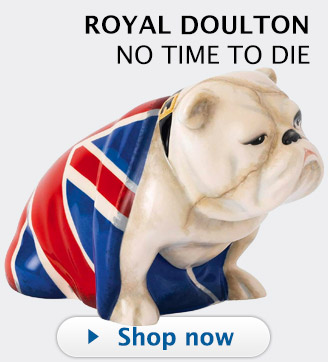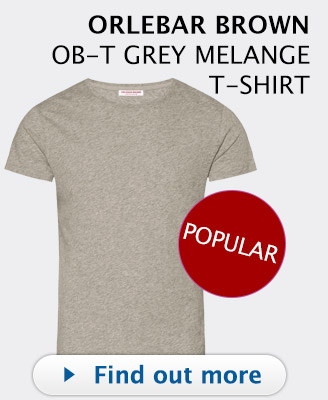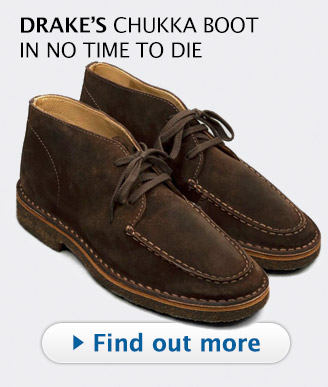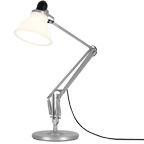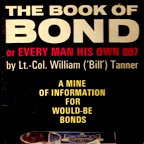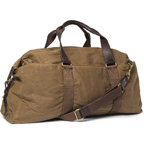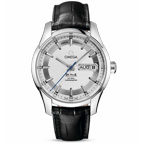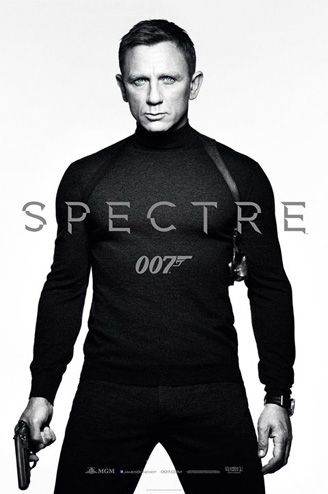The Spy Who Came out of the Closet - Part 2
The suits and tailors of the films.
Part 2: Bond's Suits - the cinematic versions
Connery, Anthony Sinclair and the Conduit Cut
Terence Young, the director of Dr No, is credited more than anyone else in establishing the look of Bond in the early film years. Essentially he took the cues from Fleming, substituting his own tailor and shirtmaker. Connery was not used to wearing suits at the time and it is said that in order to have him feel totally natural when filming began, Young had him wear them around the clock, even to the extent of sometimes sleeping in them. This anecdote may of course be apocryphal, but I've always hoped it's true.
 Young's own tailor, Anthony Sinclair, was not on Savile Row as Connery claimed in Dr No, but nearby at number 43 Conduit Street.
Young's own tailor, Anthony Sinclair, was not on Savile Row as Connery claimed in Dr No, but nearby at number 43 Conduit Street.
Sinclair created the classic, pared-down look of Connery's suits which came to be known as the 'Conduit Cut'. The choice of materials and colours was restricted: lightweight 100% wool in navy blue, shades of grey and a subtle Glen Urquhartcheck. The cut was the classic Savile Row 'waisted' look in a slimline, single-breasted, two-button - though it shouldn't be presumed the suits shared an identical cut as each seems to have its own subtle variation.
The look that Young wanted to achieve was that of a well dressed man, but one who didn't particularly stand out from the crowd - not the fashion icon status of his sixties contemporaries.
As mentioned above, during Dr No Bond states to Leiter that his suits are tailored in Savile Row, and this was obviously the intention the film makers were trying to convey. This is the only specific reference to the source of Bond's clothes throughout the film series - until Die Another Day of course where he asks for his Hong Kong tailor to be sent up to his hotel room. Said tailor then conjures up several beautiful Brioni (knock-off?) suits in record time.
There's some debate as to whether Anthony Sinclair provided all of Connery's suits until Lazenby arrived. Several tailors have claimed some involvement in the series but until I'm able to unearth conclusive evidence the subject will have to remain in doubt. The style of suits changes noticeably with Goldfinger andThunderball with more fashionable details being incorporated (such as pageboy waistcoats) and there's a wider choice of materials. There are also claims that some American tailors were used during Goldfinger - again, unsubstanciated.
OHMSS & Dimitrio (Dimi) Major
The Conduit Cut and its limited choice of materials survived almost unchanged until 1969 and the introduction of George Lazenby. Peter Hunt, the director ofOHMSS has also been described as a stylish dresser and his tailor of choice was Dimi Major of Fulham, London W1. Perhaps in line with Lazenby's status as a fashion model but also in an effort to keep the series fresh and up to date, OHMSSintroduced the idea of a slightly more fashionable Bond, with far more changes of outfit than Connery. Sports jackets, blazers and windcheater jackets had all made individual appearances before but seemed much more numerous with OHMSS, and the colours and styles were now more noticeable. This film also marked a turning point in the series from a clothing point of view: Connery had worn pretty much the same style suits throughout each his films, whether the action took place in London or Jamaica. But with OHMSS the feel changed; the London scenes are treated to a very formal approach, with Bond being allowed to relax more with a more casual cut of suit and dress-down more frequently when out of the country on assignment; an approach that has been adhered to right up through the Brosnan films. Hunt and his costume designer Marjory Cornelius came up with a conservative three-piece evolution of the Conduit Cut for the London scenes, featuring wider lapels and pocket flaps. The 'younger' styles he wears when abroad feature louder checks and brighter colours... even a white suit; unimaginable during the Connery era.
Connery returns...
There was a brief return to sobriety with DAF, though even this more traditional wardrobe had now adopted the more fashionable wider shoulders, lapels and ties, as well as some slightly more flamboyant coloured linings. I haven't been able to find out which tailor was responsible for the London end of things but the natural assumption (as there is certainly little to suggest any of Dimi Major's flair) is that Connery resumed his relationship with Anthony Sinclair. There are reports that this film had a somewhat muddled wardrobe with the London and American based units each able to choose their own styles. The American scenes, with their pink ties and cream suits, do seem at odds with the more conservative London approach, even after OHMSS.
 The Moore Years - Cyril Castle
The Moore Years - Cyril Castle
Roger Moore was the first Bond to have been an established star when he took on the role and as such he already had a working relationship with a tailor. Cyril Castle (of Mayfair) and he had been longtime collaborators through Moore's Saint andPersuaders years. In line with the general trend for a more contemporary Bond, and the perceived necessity to distance Moore's Bond from Connery's, Castle and Moore completely ditched any feeling of the Conduit Cut in favour of 1970s colours (a lot of brown) and styles. There were noticeably fewer suits for the new Bond who increasingly preferred contrasting sports jackets and slacks.
A note for traditionalists here: despite rejecting the tailoring style, Moore initially retained the distinctive turnback cuff shirts that had become a Bond trademark, ditching them only when TSWLM came along.
Though the relationship with Castle worked well, Moore became a tax exile in 1978 and was allowed only limited time in London. After Moonraker he needed a tailor who was willing to come to his home in the South of France: enter Douglas Hayward.
Douglas Hayward
Hayward was a former partner of Dimi Major and since setting up on his own had established a reputation as a tailor to the stars, numbering Peter Sellers and Michael Caine among his clients. The beautiful suits worn by Michael Caine in The Italian Job were all made by Hayward and his name featured prominently in the titles.
 Alongside the general move in the Bond films for a post-Moonraker, down-to-earth approach, Bond's wardrobe received a similar makeover. FYEO was to reflect the more serious, Fleming-Bond and from the very first scenes we can see this new approach is also reflected in Moore's suits. The sober three-piece suits show a more traditional style that was to last throughout Moore's remaining films and into Dalton's tenure. Even today the suits featured in all of the London scenes haven't particularly dated and demonstrate that a classic style really can last. Where these films have aged is when Bond travels abroad and a more casual look is called for. A classic approach to casual wear is one of the most difficult things to achieve, and it's invariably this area in which Bond's clothes will always look dated.
Alongside the general move in the Bond films for a post-Moonraker, down-to-earth approach, Bond's wardrobe received a similar makeover. FYEO was to reflect the more serious, Fleming-Bond and from the very first scenes we can see this new approach is also reflected in Moore's suits. The sober three-piece suits show a more traditional style that was to last throughout Moore's remaining films and into Dalton's tenure. Even today the suits featured in all of the London scenes haven't particularly dated and demonstrate that a classic style really can last. Where these films have aged is when Bond travels abroad and a more casual look is called for. A classic approach to casual wear is one of the most difficult things to achieve, and it's invariably this area in which Bond's clothes will always look dated.
Dalton - off the peg or off the rails?
I've never been able to confirm the tailor behind Dalton's London scenes in TLD, so if anyone has any information I'd be very grateful.
There are two or three good suits on display, matched with simple, plain ties and all are in discreet, very Bond-like tones. The cut is a little looser, more athletic and boxier, but this is a subtle reflection of the style prevalent at the time (something evident in all the films) and a lot more subtle than the popular double-breasted suits, contrasting collars and red-braces that were so indicative of the decade. All in all, a good effort, and unfairly maligned. Sadly it was all downhill from here - Dalton never looked better dressed than in these early scenes and in interviews he has said that he feels more comfortable in 'off the peg' clothes. Perhaps as a reflection of this and the Miami Vice culture of the eighties there seems to have been a less formal approach for the second half of TLD and almost all of LTK. Bond's entire wardrobe seems to have gone to pot in his second film with no focussed, consitent approach. The Morning Suit used for the wedding scenes was appalling (though excusable: presumably Felix chose the hire shop), but outside the scope of this article. If you want to see how a morning suit should be done in a Bond film, take a look at Moore in AVTAK.
Dalton's 'everyday' suit (was there really only one suit in this film?) wasn't bad at all - a nice cut in a subtle colour; it's just the way it was worn that makes the difference here. While Brosnan and Moore could make the casual-suit-with-no-tie look work for them, Dalton struggles with his formal grey suit and open shirt which suggested his tie had somehow been mislaid. If this had been an isolated incident in the film it might have been excusable but to try the same trick during the tanker chase suggests this was a deliberate 'look' for the new Bond, in line with the so-called 'Dress-down Friday' mood of the times.
But it seems things could have been a lot worse if Dalton himself had not intervened to protect the conservative nature of the original Fleming character. ForLTK, costume designer Jodie Tillen, who gave Don Johnson his pink trousers image for Miami Vice, quickly discovered he was his own man. "She wanted to put me in pastels," said Dalton in an interview with Garth Pearce in 1989, emphasizing the word as if it were an unpleasant disease. "Can you imagine? "I thought, 'No, we can't have that.' The clothes say so much about Bond. He's got a naval background, so he needs a strong, simple colour like dark blue."
In a 1987 interview, he told Rolling Stone "I cut the wardrobe down by three-quarters. Bond was never flash or ostentatious. In fact, he really wore a uniform, a dark suit, navy blue. He was very navy blue. He wasn't a wealthy man. He used his money to buy the best that he needed, but then he kept it. For example, his suitcase. At one time it was a very good suitcase. But he's had it for ten years."
* As a last word, I should reiterate that Dalton's suits all seem to be bespoke in origin - it's his casual clothes that are shop bought. No tailor has taken credit for his work on this film.
Brosnan & Brioni
Bringing us up to date we have the most focussed work on Bond's wardrobe in years. By putting one enthusiastic person (Lindy Hemming) in charge of all clothing relating to Bond we now have a cohesive approach that we can believe is all attributable to the same person, rather than the mix and match approach the character has suffered for so long. Hemming (who previously worked on Four Weddings and a Funeral) had researched the Bond wardrobe as part of her college thesis and came to the attention of the Bond producers during the planning ofGoldeneye. Due to the long gap between films the Wilsons' believed that there was pressure to re-establish all of Bond's core elements, and that included his clothes.
The problem faced by Hemming was that the action scenes in the films now required several copies of each suit for Bond and the various stunt doubles. Production schedules are notoriously tight and there was no way any of the Savile Row tailors could have produced as many as fifty suits in the time available. In contrast, just three suits were purchased for Dr No, though the budget had been significantly increased for FRWL.
 The Italian firm of Brioni had had a long association with Hollywood dating back to the suits they made for Gregory Peck in Roman Holiday. Over the years they have worked with Anthony Quinn, John Wayne, Clark Gable and Rock Hudson, to name but a few. Brioni were prepared to donate fifty suits free of charge to the first Brosnan film, but insist that they paid nothing for the privilege of being included in the closing credits even though other firms had offered substantial sums. Are the suits as good? Well there seems to be some confusion over the difference between the suits offered by Brioni and the Savile Row product. Brionisuits are sewn by hand in the town of Penne in the Abruzzi region, where more than one thousand tailors and sewers work in two shifts to meet demand. Most of the suits are completed in 18 hours but some take as long as thirty. It should be noted that 80% of production is for off-the-peg suits while 20% are said to be 'tailor made'. There is a substantial difference between tailor-made (essentially taking note of the major measurements such as sleeve and leg length etc) and bespoke, which is what Savile Row offer, in which the suit is 'built' around you taking into account elements such as uneven shoulders, back curvature, bandy-leggedness, where you carry your wallet (or gun) etc. A typical Savile Row tailor has a strict policy of one tailor, one garment and it takes over 80 hours and several fittings to achieve a perfect fit. I find it difficult to believe that an off-the-peg or tailor-madeBrioni suit can cost the same, or more, than the 'genuine' Savile Row bespoke article, which can be around £2000-£3000.
The Italian firm of Brioni had had a long association with Hollywood dating back to the suits they made for Gregory Peck in Roman Holiday. Over the years they have worked with Anthony Quinn, John Wayne, Clark Gable and Rock Hudson, to name but a few. Brioni were prepared to donate fifty suits free of charge to the first Brosnan film, but insist that they paid nothing for the privilege of being included in the closing credits even though other firms had offered substantial sums. Are the suits as good? Well there seems to be some confusion over the difference between the suits offered by Brioni and the Savile Row product. Brionisuits are sewn by hand in the town of Penne in the Abruzzi region, where more than one thousand tailors and sewers work in two shifts to meet demand. Most of the suits are completed in 18 hours but some take as long as thirty. It should be noted that 80% of production is for off-the-peg suits while 20% are said to be 'tailor made'. There is a substantial difference between tailor-made (essentially taking note of the major measurements such as sleeve and leg length etc) and bespoke, which is what Savile Row offer, in which the suit is 'built' around you taking into account elements such as uneven shoulders, back curvature, bandy-leggedness, where you carry your wallet (or gun) etc. A typical Savile Row tailor has a strict policy of one tailor, one garment and it takes over 80 hours and several fittings to achieve a perfect fit. I find it difficult to believe that an off-the-peg or tailor-madeBrioni suit can cost the same, or more, than the 'genuine' Savile Row bespoke article, which can be around £2000-£3000.
To be fair, Brioni do offer a fully-bespoke service (at extra cost) and can certainly match the skills offered by Savile Row on an individual suit - but on fifty? Similarly, many Savile Row tailors have had to broaden their business by offering off-the-peg varieties and suits that have been worked on by more than one tailor. If Savile Row were to win-back the Bond contract they would be faced with exactly the same production problems faced by Brioni, and it seems as though the days of the truly bespoke Bond may have been lost with the growth of the action sequences.
In terms of style, although Hemming took a very traditional approach with the suits, she has attempted to dress them up with more contemporary twists in areas such as the ties and cufflinks; a mistake as it's in these areas that the clothes are now looking dated. There is also more of an Italian flair evident in the cut, moving away from the traditional 'Row' silhouette. A more important point that others have commented on is that the overall tone of Bond's look has changed: instead of looking well dressed he now looks expensively dressed, a subtle but important difference which I'll explore more in the next article. Unlike Connery's Bond there is little chance of Brosnan ever blending into the background, he will always look like the best dressed person in the room. Oh, and did you all pick up on the Brosnan/Hemming tribute to the Conduit Cut in TWINE? In his grey suit, (ok, it had 3 buttons but let's not quibble) white shirt and black knitted tie he looked every inch the Connery-007.
As a closing thought, it's interesting to note that although it is always assumed that Bond's suits come from Savile Row, not one of the actors, directors or even the author shopped there.
Bibliography
Savile Row. An illustrated history: Richard Walker, Rizzoli
The Englishman's Suit: Hardy Amies, Quartet Books
A History of Men's Fashion: Farid Chenoune, Flammarion Press
Ian Fleming (Biography): Andrew Lycett, Phoenix
The Bond Files: Andy Lane and Paul Simpson, Virgin
Dressed to Kill. The Suited Hero: (various authors), Flammarion Press
James Bond's London: Gary Giblin, Daleon
007 Magazine: JBIFC, (issues too numerous to mention)
Christophorus magazine: issue 273, Roland Mischke
Cuttings from magazines and newspapers: (too numerous to mention)
The James Bond Dossier: Kingsley Amis, Jonathan Cape
The Book of Bond: Bill Tanner/Kingsley Amis, Viking
Apologies to anyone I've forgotten - please let me know.
© 2003 Bill Tanner
First published on ajb007.co.uk
